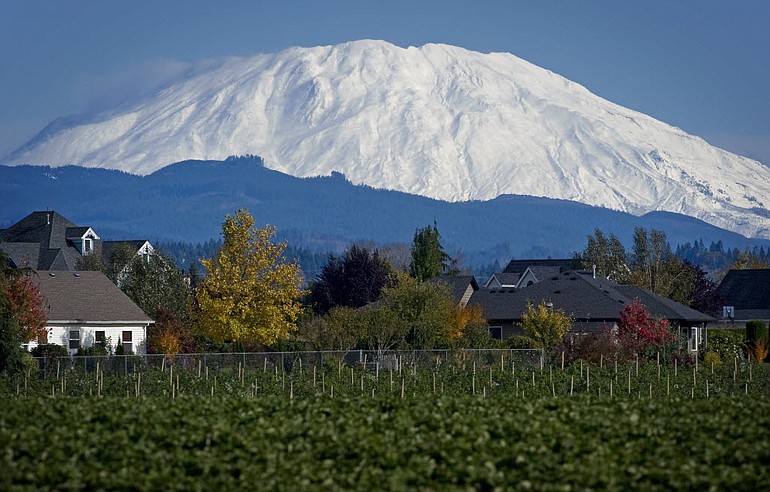A La Niña pattern developing in the Pacific Ocean is stacking the deck toward more snowfall in the Vancouver area this winter, a Washington climate official said Wednesday.
But her report, which covers 60 years of climate data, doesn’t mean you should start untangling your tire chains yet.
Karin Bumbaco, assistant state climatologist, compiled a study of winter weather patterns at four Western Washington locations — Vancouver, Olympia, Seattle-Tacoma and Bellingham.
The report was released Wednesday by the Office of the Washington State Climatologist at the University of Washington.
“It’s not a guarantee,” Bumbaco said.
“Vancouver gets much less snow in an average year” than the Puget Sound-area cities, she said, and this area also seems to be tougher for establishing trend lines.
But a review of La Niña patterns suggests that it “stacks the deck toward more lowland snow, on average, for all Western Washington.”
La Niña is associated with significantly cooler upper-ocean temperatures in areas of the Pacific, according to the climatologist’s October newsletter. Past La Niña events have been relatively wet and cool.
“More rain earlier in the fall,” Bumbaco said. “After January, the winter tends to be colder.”
‘Not a huge difference’
An El Niño, on the other hand, tends to be associated with a fall and winter that is drier and warmer than normal.
Her data for 48 of the past 60 Vancouver winters (some records were missing) showed 14 La Niña years, 14 El Niño years, and 20 years that were classified as neutral.
“I looked at 14 La Niña years in Vancouver, and eight had above-normal snowfall; six had below-average, so it’s not a huge difference.
“It’s not much for a reliable forecast,” she said.
Long-term average snowfall for Vancouver since the winter of 1950-51 is 4.1 inches. The average snowfall during those 14 La Niña winters is 5.2 inches, the smallest jump among the four locations studied.
Vancouver’s average snowfall was 5.5 inches over the 20 “neutral” winters.
But during its 14 warmer-than-average El Niño winters, Vancouver averaged only 1.1 inches of snow.
That was the significant statistic for this area, Bumbaco said, because Seattle-Tacoma (7.3 inches), Bellingham (8.1 inches) and Olympia (10.9 inches) got much more snow during those El Niño winters.
Vancouver is holding to form in one pattern, however. A La Niña fall is wetter than normal, and Vancouver’s September rainfall was above average.
The summary is available at http://www.climate.washington.edu/events/2010lowlandsnow/.




